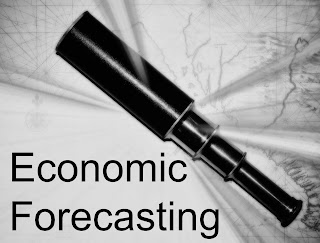 |
| Artwork: Dr. Murad Abel |
Understanding trends of economic
growth is a primary function of economists. Economic forecasts are an attempt
to reach out and snap the future between one’s fingertips. Researcher by Hoogerheide,
et. al. (2010) compares and contrasts various forms of Bayesian models and come
to a conclusion about which are most accurate for national forecasts. Having accurate
data and the proper forecasting tools has considerable influence on the type of
decisions we make today to encourage higher probabilities of beneficial
outcomes.
The researchers study helped
determine which Bayesian model-average approaches are likely to produce a
predictive density forecasting for likely events. As all forecasts to date have
weaknesses using an average help mitigate some of the uncertainty. They
incorporated data sets such as U.S. stock index returns, compounded monthly
return of S&P 500 index, and T-Bill rate to create 516 observational data
points.
Other researchers have used GNP
and other economic data sets to try and determine the likelihood of various
possibilities occurring. Most research has confirmed that using multiple levels
of analysis on economic forecasting is likely to be more correct than relying
on a single method (Marcellino, 2004). The analysis attempted to hedge the
particular strengths and weaknesses of varying Bayesian models in order come to
a rounded answer based on an average.
At its core, a Bayesian
prediction is based on taking a belief of a hypothesis and updating it as new
information becomes available. Originally developed by the 18th century
mathematician and theologian Thomas Bayes the model has been improved many
times and can now be used in complex calculations such as those found in
economics. Theorists have taken the model much further and are becoming
sophisticated in their logical projections.
As economic data becomes
available it will either lend support to a hypothesis or detract from the
hypothesis. The probability of the hypothesis being true is dependent on the
quality of the data being available. In time-varying models posterior data
becomes a priori when it occurs and fits within the hypothesis. The model takes
into account new data without being static and unchanging thereby changing the
probabilities of varying events occurring. It is this incorporate of new data
that helps it be more accurate.
The researchers found that model
averaging is beneficial in business cycle analysis and forecasting. The choice
of models must be considered with proper care to cope with estimation
efficiency and structural instability. This becomes even more important when
weights are determined through regression analysis. The use of time-varying
models produced the highest accuracy in prediction when compared with average
model mixes. Both can work well together.
The research helps economic
forecasters understand that relying on a single model is easy and convenient
but may not be the most accurate. Using multiple models and incorporating new information
when it becomes available encourages higher levels of economic forecasting accuracy.
The economic environment is not static and the incorporation of new data helps
decision-makers adjust their courses and actions to encourage those factors
that will adjust the overall system to the most beneficial outcomes in the
future.
Hoogerheide, L. et. al. (2010). Forecast
accuracy and economic gains from Bayesian model averaging using time-varying
weights. Journal of Forecasting, 29
No comments:
Post a Comment